Written by: Tiger Research
Compiled by: AididiaoJP, Foresight News
Summary:
Accelerating institutional adoption of Bitcoin: US 401(k) investment channels opened, ETFs and corporate entities continue to accumulate on a large scale.
Best environment since 2021: global liquidity at historical highs, major countries in rate-cutting mode.
Shift from a retail-dominated to an institution-dominated market: despite signs of overheating, institutional buying strongly supports downside risks.
Global liquidity expansion, institutional accumulation, and regulatory tailwinds are driving Bitcoin adoption.
Currently, there are three core drivers pushing the Bitcoin market: 1) continuously expanding global liquidity, 2) accelerated institutional capital inflow, and 3) a cryptocurrency-friendly regulatory environment. These three factors are working together to create the strongest upward momentum since the bull market of 2021. Bitcoin has risen approximately 80% year-on-year. In the near to medium term, there are limited factors that could disrupt this upward momentum.
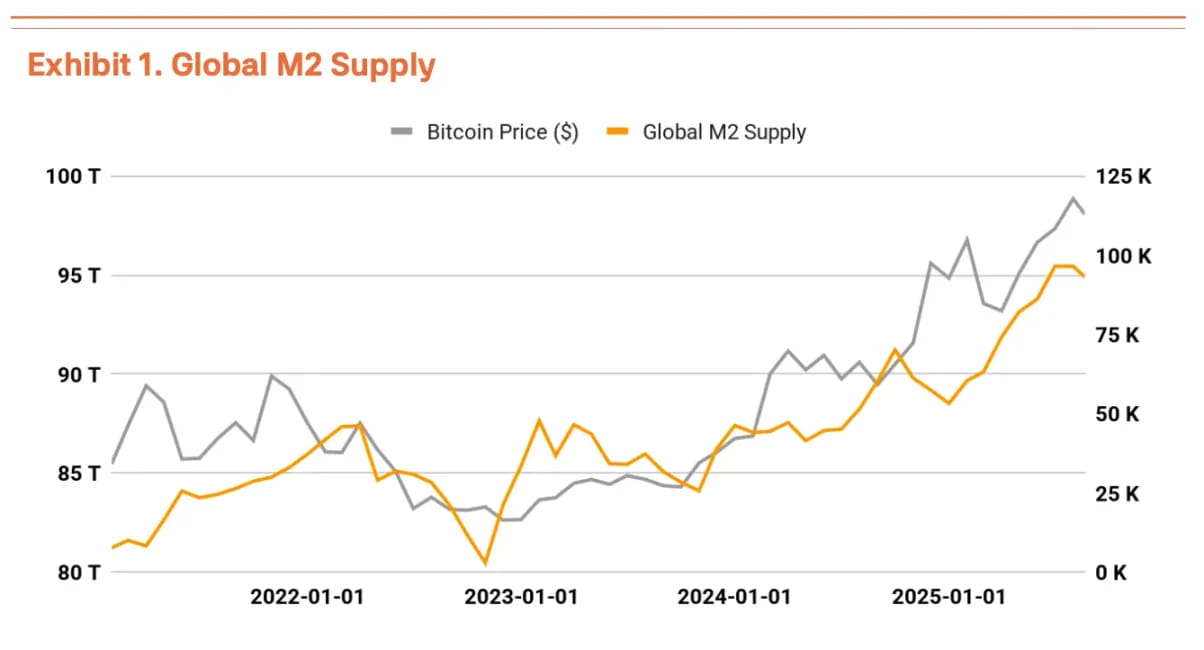
In terms of global liquidity, a highlight is that the M2 money supply of major economies has exceeded $90 trillion, reaching an all-time high. Historically, the M2 growth rate and Bitcoin price have shown similar directional patterns, and if the current monetary expansion continues, there is still potential for further appreciation (Chart 1).
Furthermore, President Trump’s pressure for interest rate cuts and the Federal Reserve's dovish stance have opened pathways for excess liquidity to flow into alternative assets, with Bitcoin being the main beneficiary.
Meanwhile, institutional accumulation of Bitcoin is occurring at an unprecedented pace. US spot ETFs hold 1.3 million BTC, accounting for about 6% of the total supply, while Strategy (MSTR) alone holds 629,376 BTC (worth $71.2 billion). The key is that these purchases represent structural strategies rather than one-off trades. Strategy's ongoing purchases through convertible bonds particularly signify that a new layer of demand is forming.
Additionally, the executive order issued by the Trump administration on August 7 represents a game-changing factor. Opening Bitcoin investments to 401(k) retirement accounts means potentially tapping into a capital pool of $8.9 trillion. Even a conservative allocation of 1% would mean $89 billion, about 4% of Bitcoin's current market cap. Given the long-term holding nature of 401(k) funds, this development should not only help price appreciation but also reduce volatility. This marks a clear transition of Bitcoin from a speculative asset to a core institutional holding.
Institutional trading volume is driving, while retail activity is receding.
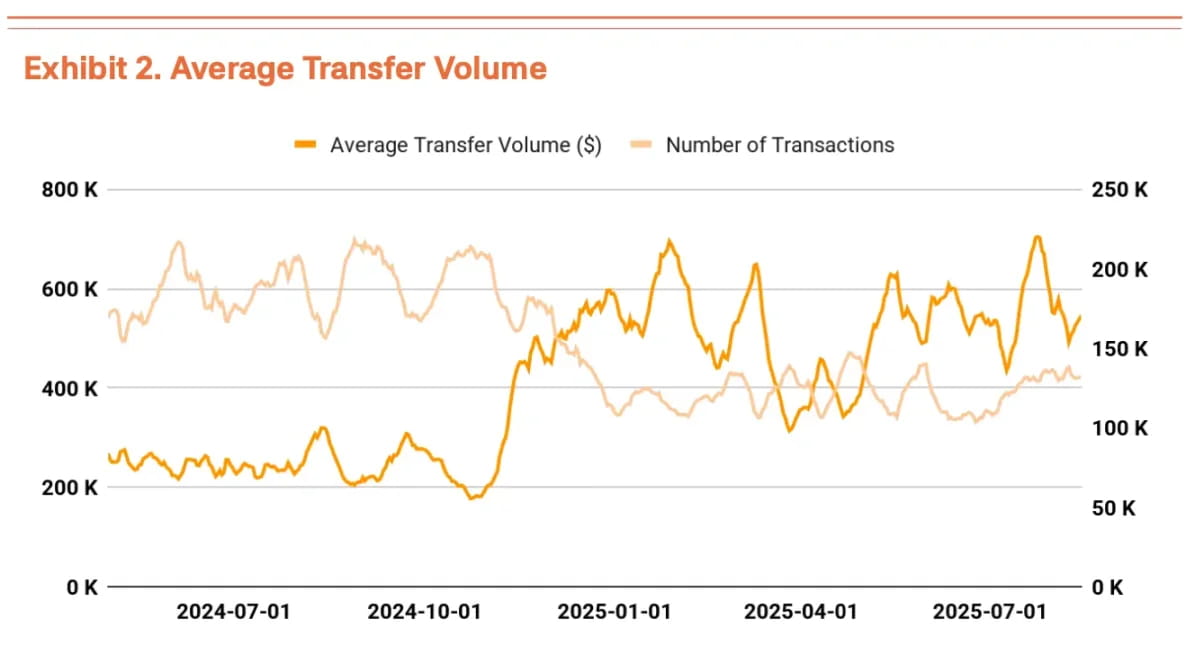
The Bitcoin network is currently restructuring around large investors. The daily average number of transactions has decreased by 41% from 660,000 in October 2024 to 388,000 in March 2025, yet the amount of Bitcoin transferred per transaction has actually increased. The growing large transactions from institutions like Strategy are expanding the average transaction size. This marks a shift of the Bitcoin network from a 'small high-frequency' to a 'large low-frequency' trading model (Chart 2).
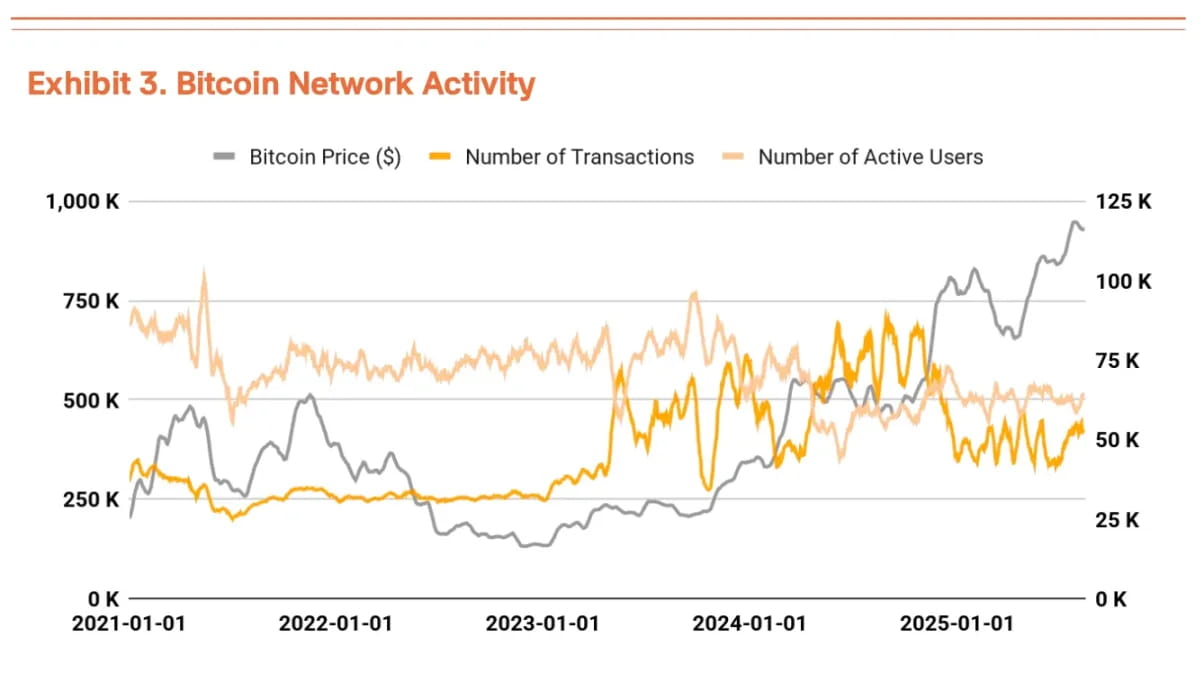
However, fundamental indicators show imbalanced growth. While institutional restructuring is clearly driving up Bitcoin's network value, the number of transactions and active users has not yet recovered (Chart 3).
Improvement in fundamentals needs to be activated through BTCFi (Bitcoin-based decentralized financial services) and other initiatives, but these are still in the early stages of development and require time to have a meaningful impact.
Overbought, but institutions provide bottom support.
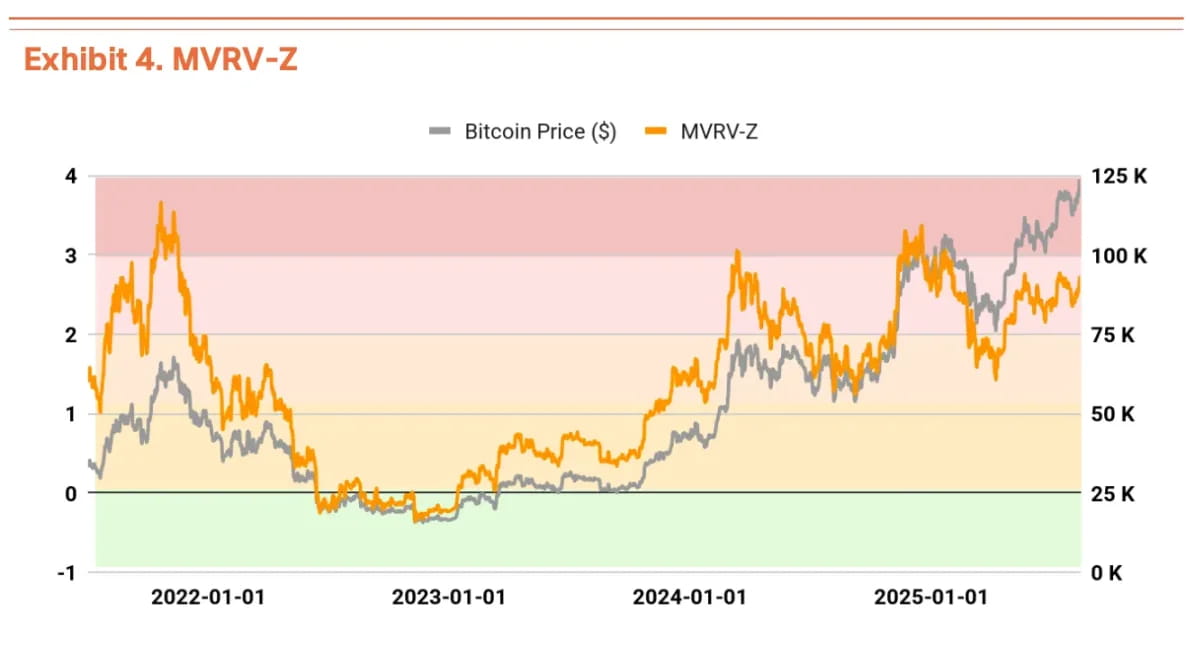
On-chain indicators show some overheating signals, but significant downside risks remain limited. The MVRV-Z indicator (measuring current price relative to investor average cost basis) is in the overheated zone at 2.49 and recently spiked to 2.7, warning of a possible near-term pullback (Chart 4).

However, both aSOPR (1.019, tracking realized profit and loss of investors) and NUPL (0.558, measuring the overall unrealized profit and loss in the market) remain in a stable zone, indicating overall market health (Charts 5, 6).
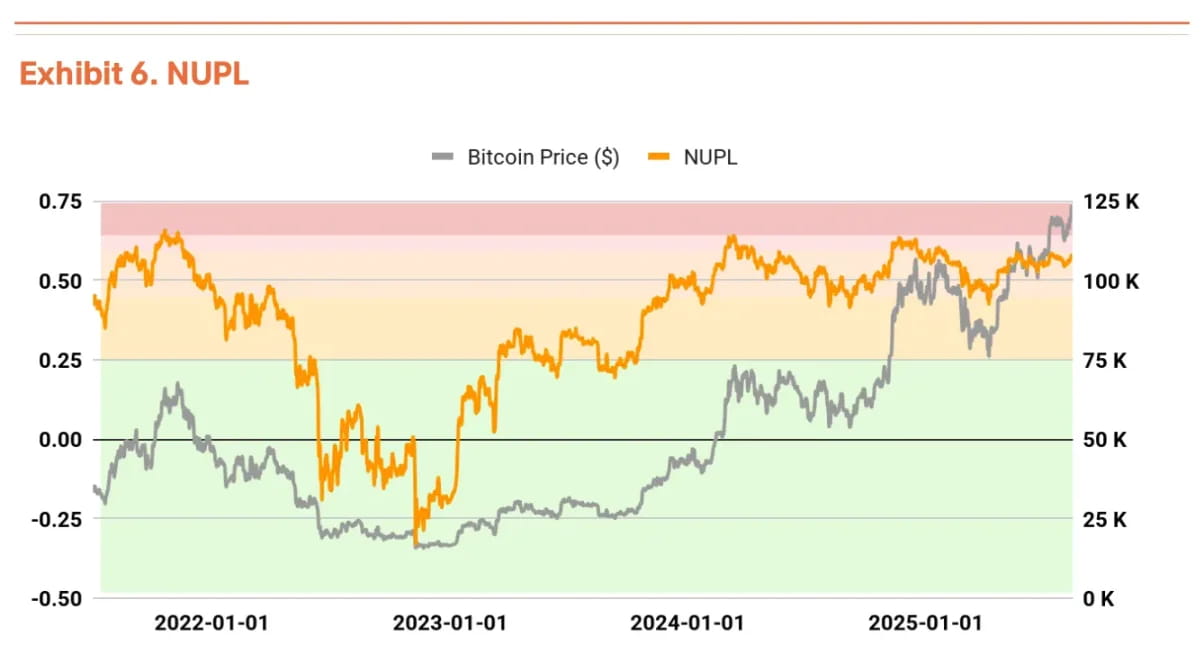
In short, although the current price is relatively high compared to the average cost basis (MVRV-Z), actual selling occurs at moderate profit levels (aSOPR), and the overall market has not yet reached the excessive profit zone (NUPL).
Supporting this dynamic is institutional purchasing power. Continuous accumulation from entities like ETFs and Strategy provides solid price support. A pullback may occur in the short term, but a trend reversal seems unlikely.
Target price $190,000, potential upside 67%.
Our TVM (Time Value Model) method derives a target price of $190,000 through the following framework: we set a base price of $135,000 (removing extreme fear and greed from the current price), then apply a +3.5% fundamental indicator multiple and a +35% macro indicator multiple.
Fundamental indicator multiples reflect improvements in network quality: although the number of transactions has decreased, the transaction value is higher. The macro indicator multiple captures three powerful forces: the continuously expanding global liquidity (e.g., M2 exceeding $90 trillion), accelerated institutional adoption (e.g., ETFs holding 1.3 million BTC), and an improving regulatory environment (e.g., $8.9 trillion capital pool opened up for 401(k) eligibility).
From the current level, this implies a 67% upside potential. While the target is aggressive, it reflects the structural changes occurring as Bitcoin transitions from a speculative asset to an institutional portfolio allocation.

